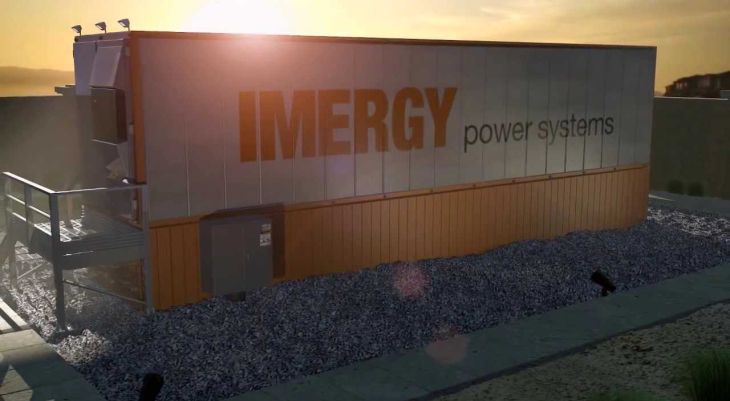These days, all of the headlines on energy storage seem to be focused on Tesla’s lithium ion Powerwall storage systems, and indeed the company has made significant progress. But that doesn’t mean the storage race is over. Large companies like BYD (which plans at least one gigafactory of its own), Samsung (which sells batteries to BMW and other automotive companies) and LG Chem are moving ahead with their lithium ion products. And some of the smaller start-ups have made significant progress in advancing their storage technologies as well, Forbes.com writes.
One of these start-ups is Imergy, which manufactures a vanadium redox flow battery. Vanadium is costly, but Imergy’s is sourced from recovered fly ash or as a byproduct in the slag that results during the process of making steel. It costs the company about half the price of buying vanadium on the open market, and it can be utilized at 98.5% purity.
Redox flow batteries are very different than lithium ion. While lithium ion comes in a solid form, and is deployed in cells, redox flow batteries use liquids with electrolytes. They come in various chemistries (including iron-chromium, zinc-bromine, and zinc-iron combinations).
And unlike lithium-ion, where you have fixed ratios of energy (kilowatt hours – kWh) to capacity (kilowatts – kW), redox flow batteries allow you to scale up the energy-to-capacity ratio simply by adding more tanks of electrolytes. So, in areas where you need lots of energy, and where weight and volume are not an issue, (lithium ion batteries are dense and can pack a big punch in a small space, which is why they are used in vehicles) redox flow batteries represent a good option. The product also has a long duration, deep cycles, and the ability to support multiple cycles.
As far as the chemistry itself, Imergy chose vanadium for a number of reasons. It lasts indefinitely in the battery, because there is no cross contamination of chemicals – a characteristic which can occur in other redox flow chemistries. Vanadium is also a hard asset. CEO Bill Watkins observes that after 20 years of use, you can extract the vanadium out of the battery and re-use it. And since it represents about 40% of the total value of the system, it represents potentially bankable collateral.
Imergy has spent the past several years operating its products in harsh desert environments in India, supporting the telecoms industry. And while the technology is proven, Imergy has recently made some significant changes. The company has redesigned the entire product platform to better address various overseas market opportunities, where it believes it can sell in volumes and drive costs down – a critical prerequisite for future profitability.
Following the retooling, Imergy now has three new products. The first is a 5 kW DC-only system delivering up to 30 kWh (it will need an inverter for application in the residential sector). In the mid-range sector, Imergy has a 30 kW, up to 200 kWh products for micro grids. Finally, in the utility-scale range, it has a 250 kW (with up to 1 megawatt hour – MWh) containerized product for larger commercial and industrial applications.

